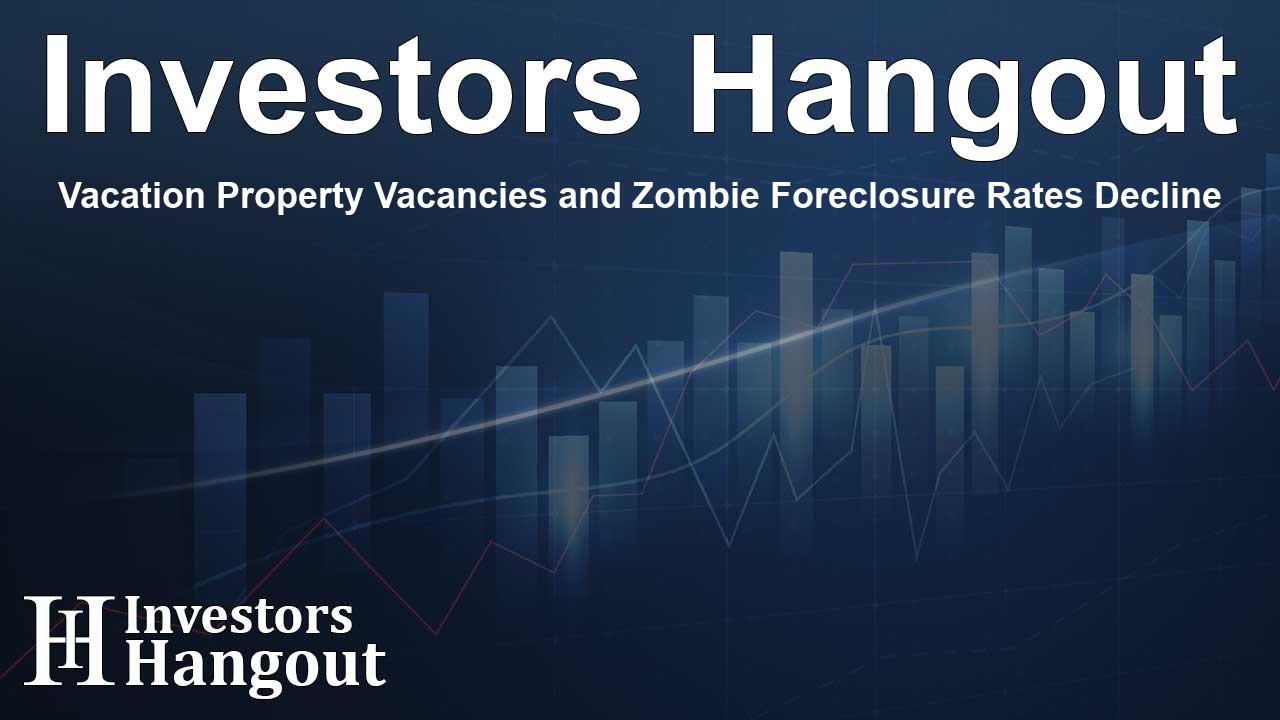Vacation Property Vacancies and Zombie Foreclosure Rates Decline

Latest Trends in Vacancies and Zombie Foreclosures
Recent reports indicate a slight decline in national zombie foreclosure rates and vacancy statistics. The current zombie foreclosure rate stands at 3.25 percent, while the national vacancy rate has dipped to 1.3 percent. This trend underscores a consistent demand for housing despite the challenges presented by the past few years.
Understanding the Report
The insights are drawn from ATTOM's comprehensive analysis of publicly recorded real estate records, which include foreclosure statuses and property vacancies. This data set unveils that approximately 1.4 million homes across the United States are currently vacant, reflecting a minor reduction from previous estimates. High demand appears to persist, as homebuyers continue to seek properties within a competitive market.
The State of Foreclosure
ATTOM’s latest findings reveal that about 228,943 residential properties are in foreclosure as of the fourth quarter. Among these, about 7,448 properties qualify as zombie homes—those abandoned by owners prior to the completion of the foreclosure process. This marks a decrease from the previous quarter's zombie rate of 3.38 percent, suggesting that while foreclosures have risen, the proportion of abandoned homes is decreasing.
Market Insights from the Report
Rob Barber, CEO of ATTOM, remarked on the significance of the consistent vacancy rates hovering around 1.4 percent for almost four years. He stated that these rates reveal a resilient housing market, indicating that even with an uptick in foreclosure filings, the caliber of homes left in the foreclosure process is improving.
State and District Evaluations
Across various states, there were recorded increases in zombie properties, particularly in regions such as Oregon, where there was a significant rise of 37.8 percent. Conversely, states like Oklahoma, Indiana, and California witnessed declines in their zombie property counts, illustrating variations in regional market conditions.
Vacancy Rates by Region
When examining overall home vacancy rates according to ATTOM’s data, it illuminates that states such as Oklahoma and Kansas experience notably higher vacancy rates, whilst New England states display some of the lowest. New Hampshire, for example, reported a vacancy rate of merely 0.3 percent, indicating tight housing supply in these areas.
Insights into Investor-owned Properties
Interestingly, the analysis indicates that investor-owned homes face slightly higher vacancy rates than typical residential properties. Nationally, about 3.5 percent of the 880,347 investor-owned homes are unoccupied, with states like Indiana and Illinois leading in this aspect.
Concentration of Zombie Properties
ATTOM's analysis also highlights specific zip codes where zombie properties are most prevalent. Notable examples include areas in California and Iowa, where substantial percentages of homes in foreclosure have been abandoned. This concentration can significantly impact local markets as abandoned properties tend to drag down neighborhood values.
Conclusion on Current Trends
The data from ATTOM’s fourth-quarter analysis reveals that while the overall vacancy rate in the U.S. is down slightly, the trend indicates growing stability in the housing market. The reduction in zombie properties suggests improved management of foreclosures and a potential recovery path, especially in states observing decreases in these problematic properties.
Frequently Asked Questions
What are zombie foreclosures?
Zombie foreclosures refer to homes that have been abandoned by their owners while still in the foreclosure process.
What is the current zombie foreclosure rate?
The current national zombie foreclosure rate is recorded at 3.25 percent.
Why is the vacancy rate important?
The vacancy rate is crucial as it indicates the availability of housing and can reflect economic stability in real estate markets.
How does investor-owned property vacancy compare?
Investor-owned properties have a higher vacancy rate of about 3.5 percent, compared to the general rate of 1.3 percent.
Which states experience the highest vacancy rates?
The states with the highest vacancy rates include Oklahoma, Kansas, and Alabama, reflecting market conditions in those regions.
About The Author
Contact Henry Turner privately here. Or send an email with ATTN: Henry Turner as the subject to contact@investorshangout.com.
About Investors Hangout
Investors Hangout is a leading online stock forum for financial discussion and learning, offering a wide range of free tools and resources. It draws in traders of all levels, who exchange market knowledge, investigate trading tactics, and keep an eye on industry developments in real time. Featuring financial articles, stock message boards, quotes, charts, company profiles, and live news updates. Through cooperative learning and a wealth of informational resources, it helps users from novices creating their first portfolios to experts honing their techniques. Join Investors Hangout today: https://investorshangout.com/
The content of this article is based on factual, publicly available information and does not represent legal, financial, or investment advice. Investors Hangout does not offer financial advice, and the author is not a licensed financial advisor. Consult a qualified advisor before making any financial or investment decisions based on this article. This article should not be considered advice to purchase, sell, or hold any securities or other investments. If any of the material provided here is inaccurate, please contact us for corrections.
